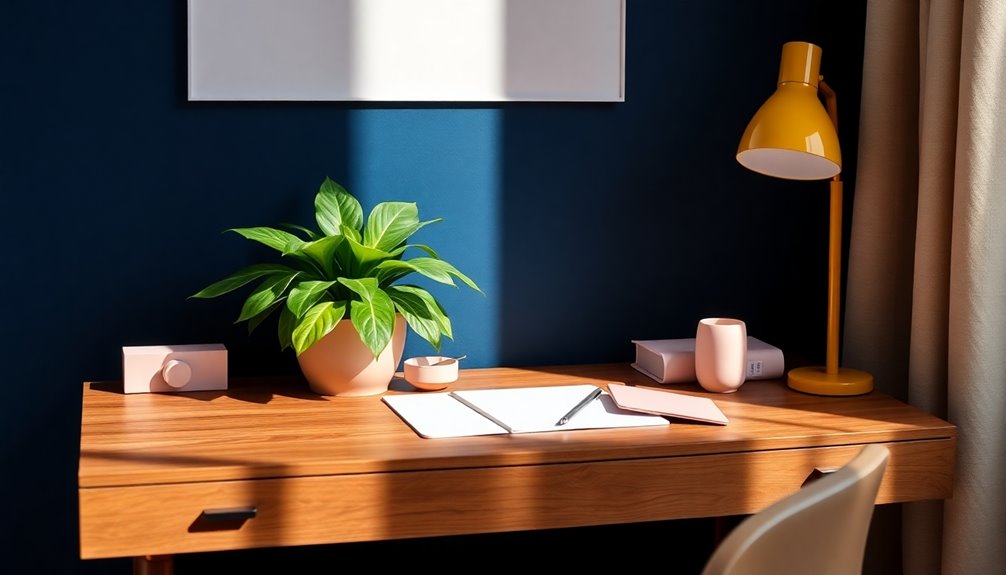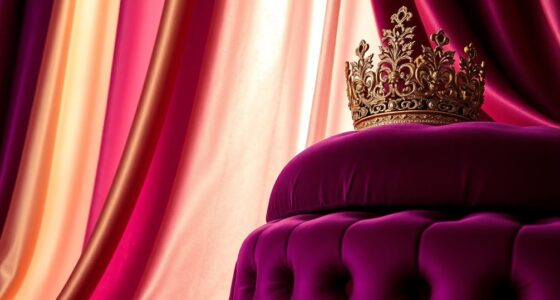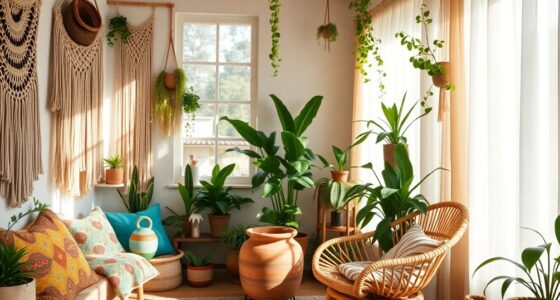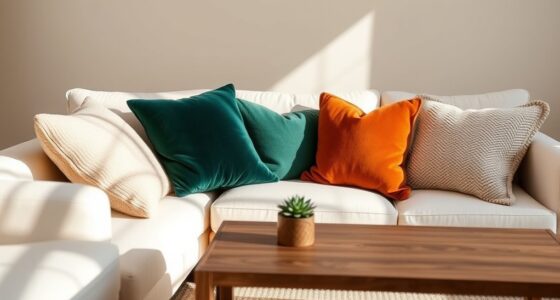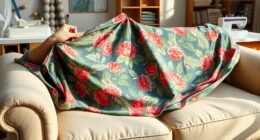Your favorite colors reveal a lot about your design style and emotions. If you lean toward warm hues like red or orange, you likely embrace energy and excitement. Prefer cool colors such as blue or green? You probably value calmness and tranquility in your spaces. Bright, bold colors can reflect an outgoing personality, while neutral palettes might indicate a more balanced, conscientious approach. Each color you choose invites specific feelings and influences the overall atmosphere of your environment. By understanding these nuances, you can enhance your personal style even further, and there's so much more to explore about color psychology.
Key Takeaways
- Your favorite colors can reflect your personality traits, influencing your design style and choices in home decor.
- Bright colors like yellow and blue suggest an energetic, extroverted design style, while muted tones indicate a more reserved approach.
- A preference for neutral colors often points to a minimalist design style, favoring simplicity and balance in aesthetics.
- Bold, saturated colors in your palette may indicate a desire for drama and excitement, leading to dynamic, eye-catching designs.
- Understanding color saturation and value can enhance your design style, promoting desired emotional responses and overall ambiance.
Color Psychology Overview
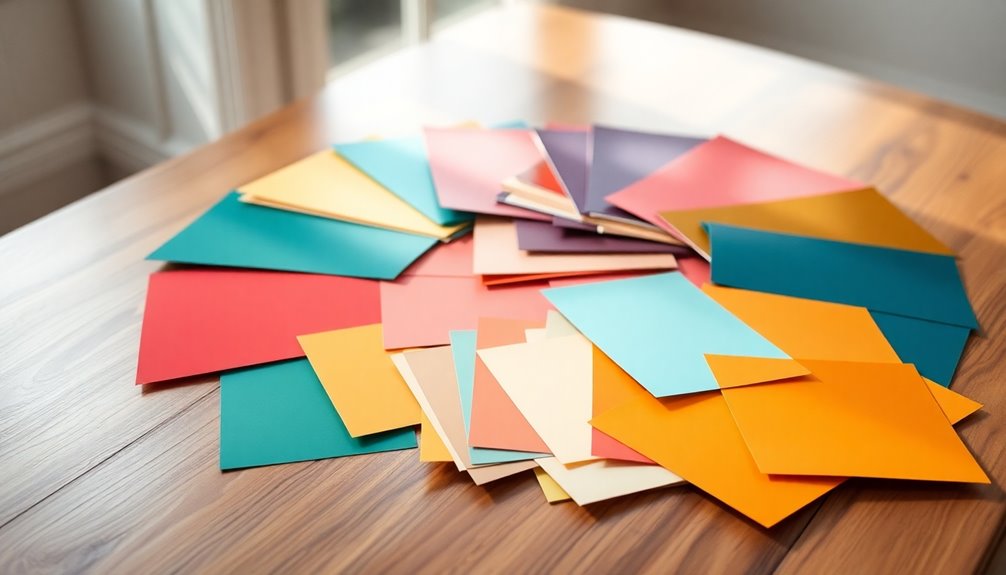
Color psychology explores how colors influence our emotions and behaviors, shaping our perceptions in various contexts.
Warm colors like red and orange stimulate excitement and energy, while cool colors such as blue and green evoke relaxation and tranquility. Neutral colors serve as a backdrop, creating contrast that highlights brighter hues.
Additionally, cultural associations and personal experiences shape how you perceive colors; for example, red might symbolize luck for some. Colors affect not only how you feel but also how you behave and make decisions. In fact, studies show that 62% to 90% of first impressions are based on color alone, showcasing its powerful role in communication and perception. Understanding color psychology can enhance your design style effectively.
Color Preferences and Personality Traits
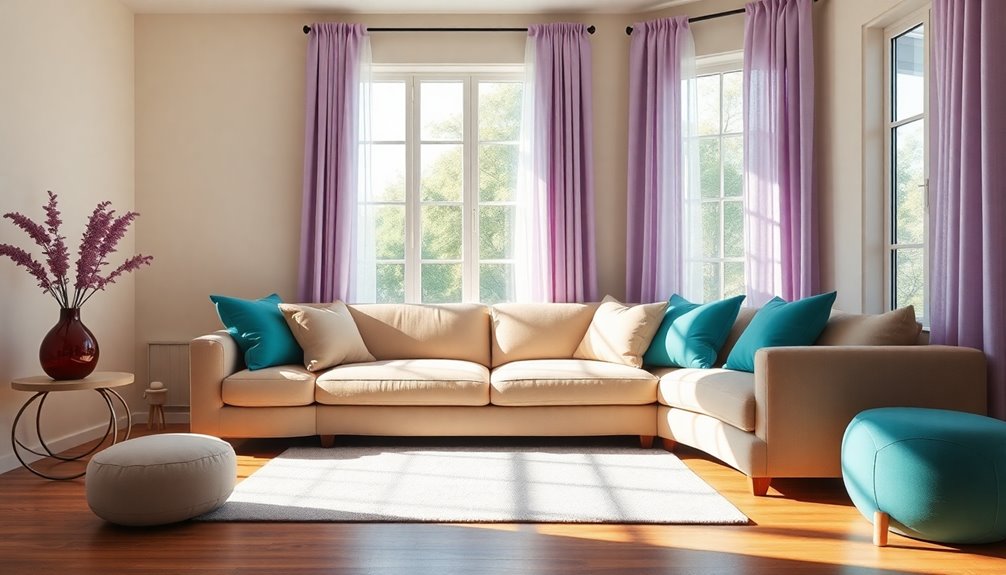
When you consider how personal traits influence your aesthetic choices, it becomes clear that your color preferences often reflect deeper aspects of your personality.
For instance, if you're extraverted, you might gravitate toward bright, energetic colors like yellow or blue. On the other hand, conscientious individuals often prefer simpler, balanced palettes, favoring black and white tones. Additionally, extraversion significantly influences your color choices, highlighting the connection between personality traits and preferences. Engaging in dynamic communication exercises can also help partners understand how their individual styles relate to their relationship dynamics.
If you're open to experience, you may enjoy both warm and cool hues, while those with neurotic tendencies might lean towards bold, saturated colors. Gender and age also play a role; women often choose reds and younger individuals might favor black, indicating a complex interplay between personality and color choices.
Your favorites reveal much about who you are.
Color in Interior Design

In interior design, the right hues can transform a space, influencing both its aesthetic appeal and the emotions it evokes. Start by choosing a dominant color that covers about 60% of the area, complemented by secondary colors for depth and an accent hue to elevate the overall look.
Use the three-color rule to maintain balance and harmony while considering color saturation—light pastels promote serenity, while deep tones add sophistication. Understanding color relationships helps in selecting combinations that create the desired emotional response in a room.
Remember that colors evoke emotions; for instance, blue brings calmness, and yellow sparks joy. Tailor your palette to the room's function, ensuring your choices enhance comfort and reflect personal style.
With thoughtful color selection, you can create spaces that resonate with their intended purpose and your unique taste.
Color Significance in Branding

Colors play a crucial role in shaping brand identity and perception. By using consistent colors across all channels, you help establish instant recognition for your brand, much like Coca-Cola has done. Different colors evoke specific associations that can resonate with your audience; for instance, red sparks excitement, while white conveys purity. In a crowded market, your brand's distinct colors can make it stand out. Additionally, consistency in brand colors enhances recognition and recall among consumers, with studies showing that consistent use can increase recall by up to 80%. Furthermore, brands that maintain a consistent color strategy are more likely to experience customer satisfaction in their audience engagement.
Colors influence emotions and purchasing decisions—up to 90% of initial impressions come from color alone. Understanding color psychology is essential; for example, yellow radiates warmth, while black suggests luxury. Ultimately, your choice of colors can significantly impact consumer behavior, shaping how your brand is perceived and experienced.
Key Color Attributes

Understanding key color attributes is essential for creating effective designs. First, hue identifies colors like red or blue, forming the foundation of your palette.
Next, value reflects a color's lightness or darkness, helping you create contrast and depth. Saturation indicates a color's purity and vividness; bright red feels bold, while pale pink appears softer.
Intensity, often used with saturation, refers to a color's strength, influencing how it stands out in your design. By mastering these attributes, you can craft harmonious color schemes that evoke the desired mood and emotional response, making it critical to understand color harmonies.
Whether you're aiming for a vibrant or muted effect, understanding these elements will elevate your design style and enhance your creative expression.
Practical Applications of Color Psychology
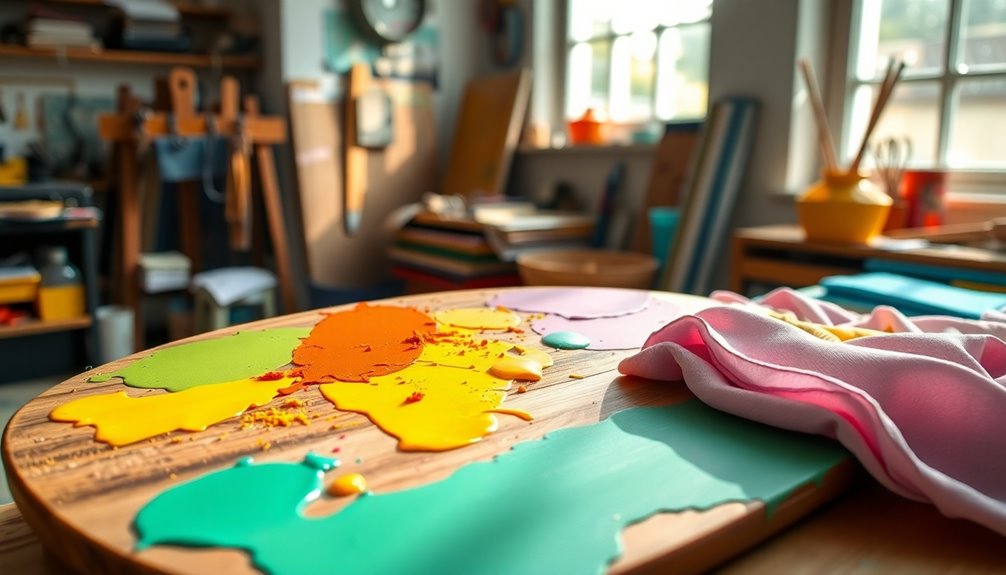
When designing, consider how different colors can influence the emotions and perceptions of your audience. For a calming effect, use blue. If you want to ignite excitement, red is your go-to. Green promotes growth and harmony, perfect for nature-themed designs, while yellow brings happiness and optimism. For luxury and creativity, incorporate purple. Additionally, blue is often linked to trust and reliability, making it an excellent choice for professional branding.
Also, be aware of cultural color associations. For instance, white signifies purity in Western cultures but mourning in some Eastern ones.
Using contrasting colors can emphasize important elements—think bright colors on dark backgrounds. Consistency in your color palette helps with brand recognition, ensuring a cohesive look across all materials.
Frequently Asked Questions
How Can Color Choices Impact Real Estate Value?
Color choices can significantly impact real estate value. When you select appealing colors, like light grays or soft yellows, you create a welcoming atmosphere that attracts buyers.
Unappealing colors, on the other hand, can decrease a property's value by up to 5%.
Moreover, the right color can speed up sales; light green homes often sell quicker than darker hues.
What Are Some Color Trends in Modern Design?
In modern design, color trends are shifting towards deep, bold hues like ebony and clove, which add sophistication to spaces.
You'll also notice vibrant jewel tones, such as ruby red and emerald green, making a luxurious statement.
Warm metallics and comforting neutrals create inviting atmospheres, while playful colors, like pastel monochromes, bring a fresh vibe.
How Do Seasonal Changes Affect Color Preferences?
Seasonal changes significantly affect your color preferences.
During fall, you're likely drawn to dark, warm colors like deep reds and oranges, reflecting the season's ambiance. In contrast, spring and summer may inspire you to embrace bright, bold hues like pinks and yellows.
This shift occurs as the colors around you become more activated, making certain shades resonate more strongly with your emotions and experiences throughout the year.
Can Color Influence Productivity in Workspaces?
Color can dramatically influence productivity in your workspace.
While cool colors like blue and green enhance focus and calmness, warm colors such as red and yellow energize and inspire creativity.
You might find that a balanced palette fosters both concentration and innovation.
Conversely, an overwhelming use of vibrant hues could distract you.
What Role Does Lighting Play in Color Perception?
Lighting plays a crucial role in how you perceive colors. Different light sources, like LED or incandescent, can make colors appear more vibrant or warmer.
The intensity and temperature of the light can shift how you see hues, enhancing blues in cooler light or reds in warmer settings. Additionally, the materials and textures of objects interact with light, affecting their reflected colors.
Your environment's lighting can drastically change your overall color experience.
Conclusion
Incorporating your favorite colors into design can transform your space and reflect your personality. Did you know that 85% of consumers make purchasing decisions based on color? This statistic highlights just how powerful color is—not just in your home, but also in branding and marketing. By understanding color psychology, you can create designs that resonate with both you and others, making your environment feel more authentic and inviting. Embrace the colors you love and watch their impact unfold!
